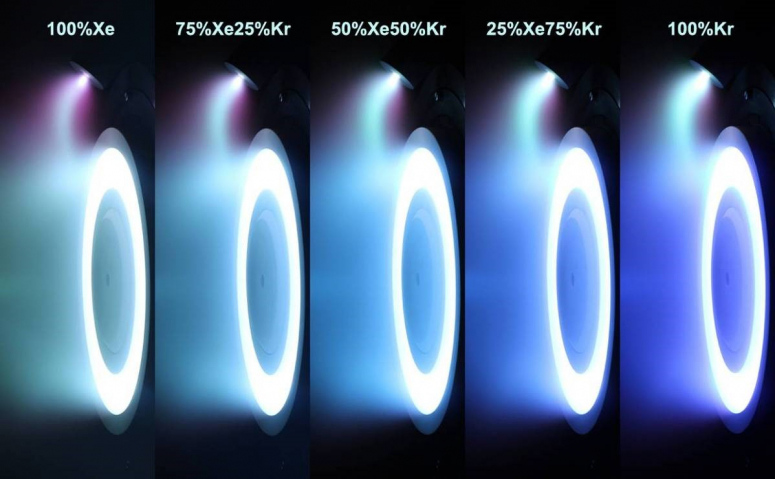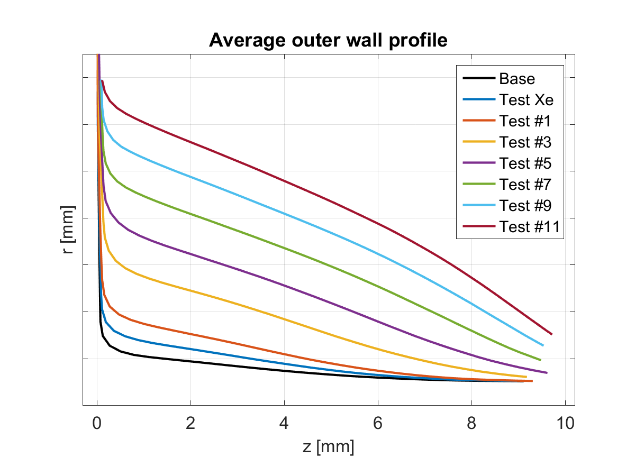-
StatusCompleted
-
Status date2017-09-06
-
Activity Code4B.063
Several mission analyses have shown a need for higher power electric propulsion (EP) systems for both Earth orbit raising and deep space applications. Therefore, the development of high power EP systems is being emphasized as the necessary step towards possible future missions of large satellites.
Traditionally, xenon has always been the propellant of choice for EP applications due to the optimal compromise between performance and ease of handling. Although xenon has several technical advantages, its high price suffers of a remarkable fluctuation, posing serious budget concerns. To reduce propellant cost, a more economical alternative to xenon needs to be identified, while retaining thruster performance levels, without disregarding crucial system level considerations.
The KHT project plan focuses on an experimental campaign to test, with pure krypton and with different Kr-Xe blends, a 5 kW Hall-effect thruster, the Sitael-HT5k, designed to operate with xenon. Main objectives of the test campaign are: (i) characterisation of thruster performances and comparison with xenon as a benchmark; (ii) assessment of the erosion evolution of the channel walls; (iii) validation of a reduced order performance and erosion model; (iv) extrapolation of the effect of alternative propellants on lifetime and EOL performance; (v) assessment of system level implications related to the use of alternative propellants.

Figure 1 - Near field plume region of the Sitael-HT5k operating with different blends of Xe and Kr (Copyright: Sitael SpA)

Figure 2 – Reconstruction of the profile of Sitael HT5k outer ceramic wall starting from experimental data. Data have been collected at T0, after 30 hours of test with xenon and every ~30h test with a 75%Kr-25%Xe mixture. (Copyright: Sitael SpA).
To give a clear economic advantage to EP systems, the cost of a complete system has to drop significantly. To reach this goal, the non-recurring costs tied with the development and the qualification of the thruster system must be curtailed by reducing propellant expense. This is particularly true for EP systems operating with xenon.
The challenge of this project is the identification of a cheaper alternative to xenon that, while addressing potential benefits to development and recurring price, does not induce significant derating of the performances of existing EP concepts, both at thruster and at system levels.
The HT-5k thruster unit showed a stable operation with the selected alternative propellants over a wide range of discharge voltages (250-600V) and powers (2-7 kW). The thruster was capable to reach high thrust efficiencies also with pure krypton. In general, with the transition from pure xenon to pure krypton the maximum of the thrust efficiency showed a shift towards higher power levels (4000-4500W for pure Xe; ~6500W for pure Kr). The thruster showed a stable discharge current trend with no issues of flame-out or overheating. Plume measurements indicated that beam divergence depends on the amount of krypton in the mixture: the higher the percentage of krypton, the larger the beam divergence. As expected, pure Kr and Kr blends showed to increase significantly the initial erosion rate of the ceramic channel.
In parallel, the upgraded semi-empirical model developed at Sitael for Hall-effect thrusters allowed to take into account mixtures of different propellants and to obtain a better insight of the thruster behaviour along its lifetime.
Computed plasma properties where used to predict the channel erosion and update the measured eroded profile. Good accuracy in performance predictions was retained, also with strongly eroded ceramic profiles.
The experimental campaign was performed with SITAEL HT5k, a versatile 5kW class Hall-effect thruster: it can be operated in a wide range of conditions that spans from the High Thrust Mode (for orbit insertion, raising or repositioning) to the High Specific Impulse Mode (for station-keeping applications). For the test campaigns of this Project, the HT5k was coupled with the HC20 cathode, a LaB6 high-current hollow cathode also developed by SITAEL.
In parallel, a semi-empirical model developed at Sitael for Hall-effect thrusters was upgraded to take into account mixtures of different propellants. By considering a linear approximation of the pure propellant parameters, performances of Hall EP thrusters were evaluated for pure xenon, pure krypton and mixtures of the two gases. The introduction of a low-order physical model of Hall thrusters allowed to obtain a better insight of the thruster behaviour. The model was validated against the available test results: a remarkable match between experimental data and predicted performance of thrusters was obtained for all investigated propellants.
N/A
The project plan was organized into two technical phases.
Phase 1 focused on the identification of suitable candidate propellants and of a reference EP system (task 1); on the performance of a preliminary experimental campaign aimed at verifying the compatibility of the selected EP system with a number of potential alternative propellants (task 2); on upgrading an analytical model to include the effects of alternative propellants, taking advantage from data gathered during the compatibility test (task3).
Phase 2 was dedicated to a long duration test with the selected propellant (task 4); the assessment of implications at system level associated with the use of alternative propellants (task 5); the identification of a road-map for further development (task 6).
Project activities have been completed. The overall outcome is that propellant different from xenon can provide significant economic benefits in the long term for commercial telecom applications. In particular, krypton would allow for a major reduction of qualification and operation costs with minor performance drawbacks.
The envisaged road-map includes experimental and theoretical activities focused on the optimization of thruster and cathode design for operation with krypton propellant.



